Ngoc Hoang Pagoda or Phuoc Hai Tu has English name Jade Emperor Pagoda, is a deeply revered spiritual site in Ho Chi Minh City, attracting both locals and international visitors. Famous for its serene ambiance and rich cultural heritage, the pagoda gained global attention when the U.S. President Barack Obama visited in 2016. With its intricate architecture, spiritual significance, and vibrant religious practices, the pagoda stands as a must-visit destination for anyone seeking a deeper understanding of Vietnam’s cultural and religious landscape.
Necessary information about Ngoc Hoang Pagoda
Open to visitors from 7:00 AM to 5:30 PM every day, with extended hours from 5:00 AM to 7:00 PM on the 1st and 15th days of the lunar calendar. This pagoda is an essential stop for those looking to experience the spirituality of Ho Chi Minh City.
History of the Ngoc Hoang Pagoda
The pagoda was built between 1892 and 1900 by a Chinese immigrant named Luu Minh, Phuoc Hai Tu initially served as a place of worship for the Jade Emperor, a key deity in Taoism. The pagoda’s architecture and design are heavily influenced by traditional Chinese temple aesthetics, featuring intricate woodwork and elaborate carvings. Over the years, the pagoda has become a symbol of cultural and religious integration, blending elements of Buddhism, Taoism, and Confucianism.
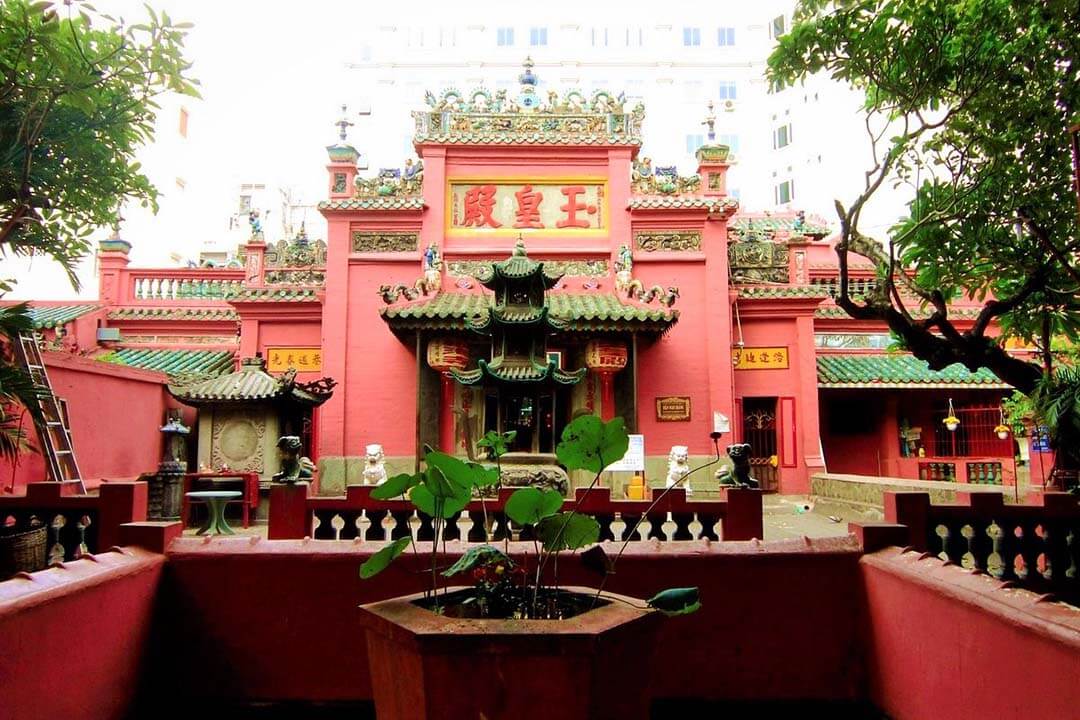
Renamed Phuoc Hai Tu in 1984, the pagoda is still widely recognized by its original name. Over the years, it has become a symbol of cultural and religious synthesis, reflecting Vietnam’s diverse spiritual landscape. The pagoda remains an important cultural landmark in Ho Chi Minh City, drawing visitors with its historical significance, architectural beauty, and spiritual ambiance.
Where is Ngoc Hoang Pagoda?
The pagoda is located at 73 Mai Thi Luu Street, District 1, Ho Chi Minh City. This central position places the pagoda within easy reach of many other notable attractions, making it a popular destination for visitors interested in the city’s cultural and historical sites.
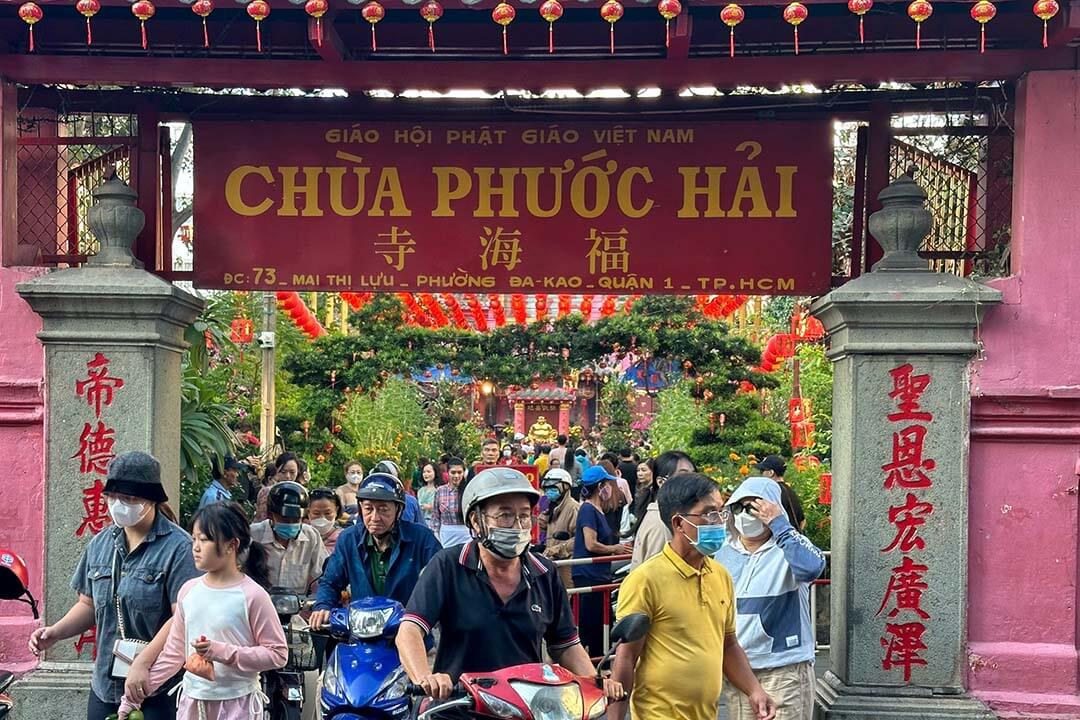
Accessible by various modes of transportation, including buses, motorbikes, and taxis, the pagoda is well-connected to different parts of the city. Its proximity to key routes and landmarks ensures that it is a convenient stop for tourists and locals alike. The pagoda’s location also makes it an integral part of many guided tours, offering a seamless experience for those looking to immerse themselves in the rich traditions and spiritual heritage of Ho Chi Minh City.
Things to do in Ngoc Hoang Pagoda
Discover a wealth of activities at Ngoc Hoang Pagoda that will enchant both your spiritual and cultural senses. Visitors can engage in traditional worship, explore the intricate carvings and sculptures, and enjoy the peaceful environment.
Pray for children, love, and protection
The pagoda is highly regarded for its strong connection to fertility blessings. Couples frequently visit this revered site to seek divine intervention for starting a family, nurturing harmonious relationships, and ensuring the protection of their loved ones. The pagoda features dedicated altars where visitors perform rituals believed to bring about prosperity, happiness, and positive outcomes in their personal lives. These time-honored practices attract those who wish to receive the deities’ favor, making the pagoda a key destination for those desiring blessings related to family and well-being.
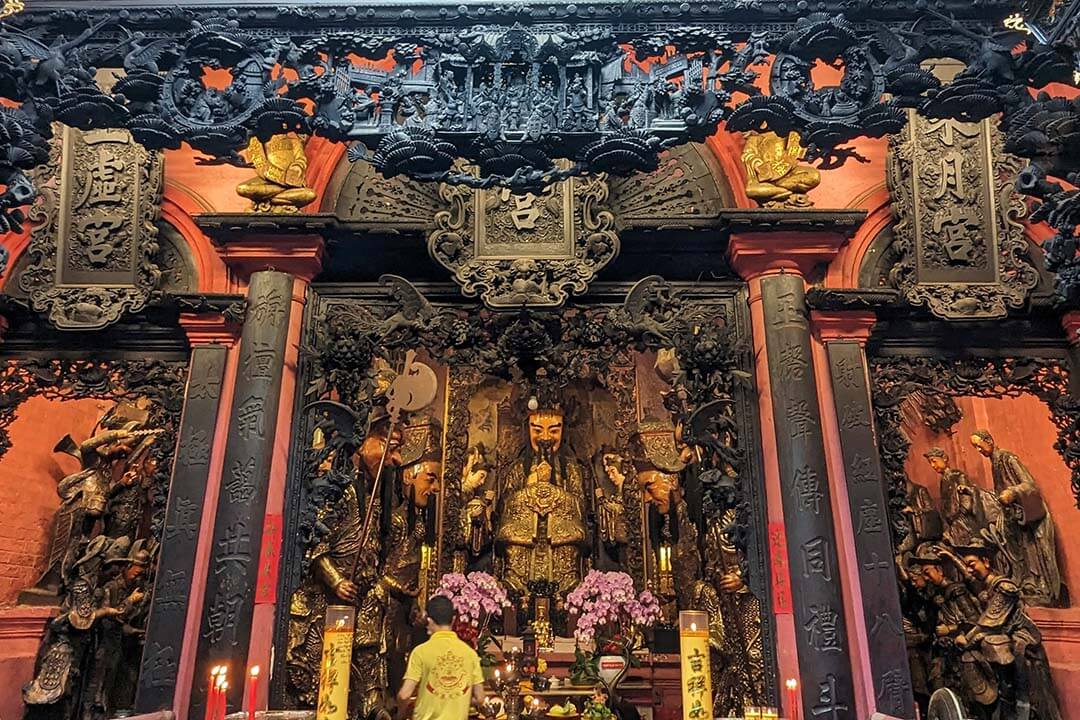
The importance of these rituals goes beyond tradition, serving as a deep expression of faith and hope. The spiritual ambiance within the pagoda offers a sense of comfort and assurance to those who come seeking divine support. Belief in the deities’ ability to grant blessings adds to the pagoda’s appeal, drawing individuals who are not only seeking spiritual solace but also practical benefits in their family and personal lives.
Cultural immersion and worship experience
Phuoc Hai Tu offers a unique chance to experience both Vietnamese and Chinese religious traditions firsthand. The serene atmosphere, filled with the aroma of incense and the gentle hum of prayers, creates a tranquil environment conducive to reflection and spiritual immersion. Visitors are invited to participate in various rituals, such as lighting incense and making offerings, which helps them gain a deeper appreciation for the customs and practices observed at the pagoda.
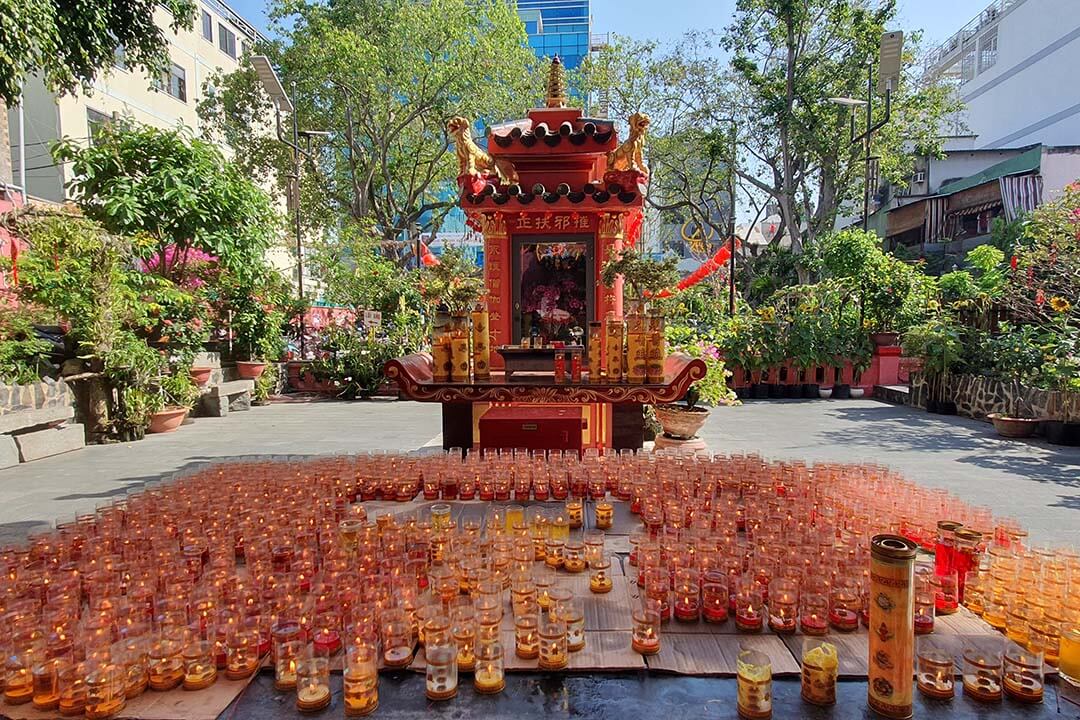
Engaging in these spiritual activities provides insight into the rich cultural heritage of the area, showcasing how ancient traditions are preserved and practiced today. The pagoda not only serves as a place of worship but also as a living testament to the fusion of Vietnamese and Chinese religious influences, offering visitors a meaningful connection to the region’s spiritual and cultural history.
Carving and sculpture art appreciation
The pagoda is celebrated for its impressive array of over 300 statues, including detailed representations of Gautama Buddha, Bodhisattva Mahasthamaprapta, and Bodhisattva Ksitigarbha. These finely crafted figures are central to the pagoda’s spiritual practices and showcase traditional artistry at its finest, providing visitors with a profound visual and spiritual experience.
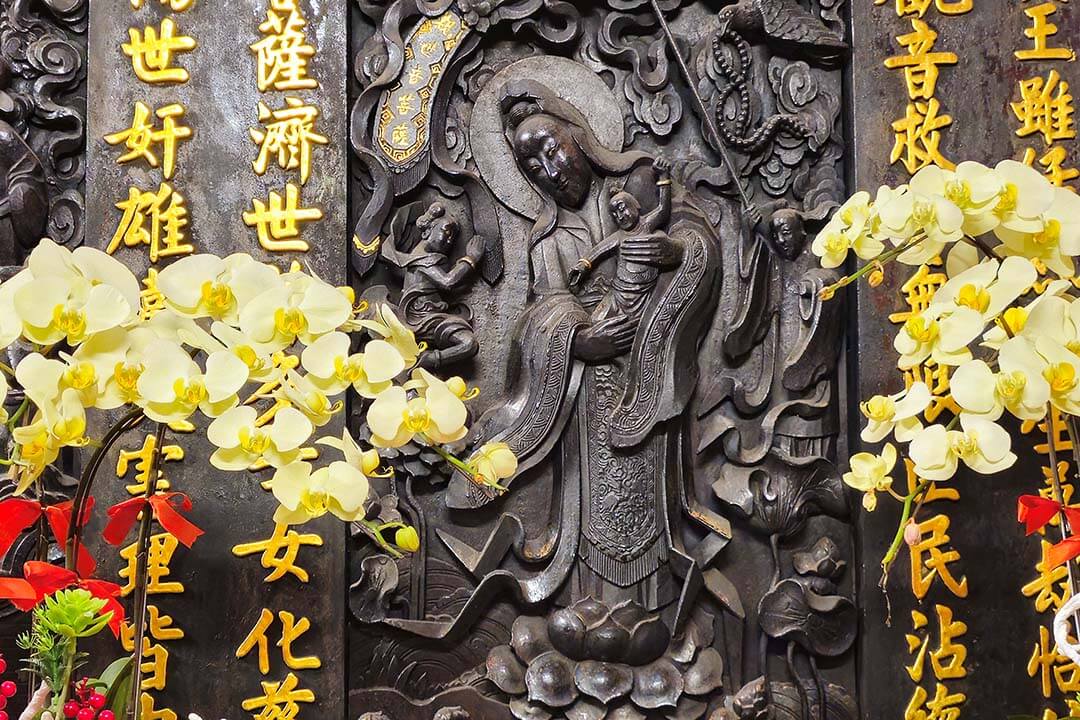
The pagoda is also adorned with intricate wood carvings and Chinese inscriptions, highlighting exceptional craftsmanship. The elaborate designs and symbolic motifs on the panels offer a glimpse into the region’s rich artistic and cultural heritage, making the pagoda a significant site for appreciating both art and spiritual traditions.
Visit the most beautiful places near Ngoc Hoang Pagoda
After exploring Phuoc Hai Tu, visitors can enjoy several nearby attractions that offer a mix of culture and recreation.
The Saigon Zoo and Botanical Garden
The Saigon Zoo and Botanical Garden, located nearby, offers a serene escape into nature with its diverse collection of animals and beautifully maintained gardens. Visitors can enjoy a peaceful stroll through the lush greenery, appreciating Vietnam’s rich natural beauty while exploring various species housed within the zoo. It’s an ideal spot for families and nature enthusiasts looking for a relaxing break from the city’s hustle.
Ho Chi Minh City Book Street
Ho Chi Minh City Book Street, a lively area perfect for bibliophiles, is lined with an array of bookstores and cozy cafes. This vibrant street regularly hosts literary events, book signings, and cultural activities, providing a unique glimpse into Vietnam’s thriving literary scene. It’s a wonderful place to unwind with a book, enjoy a coffee, and immerse oneself in the city’s reading culture.
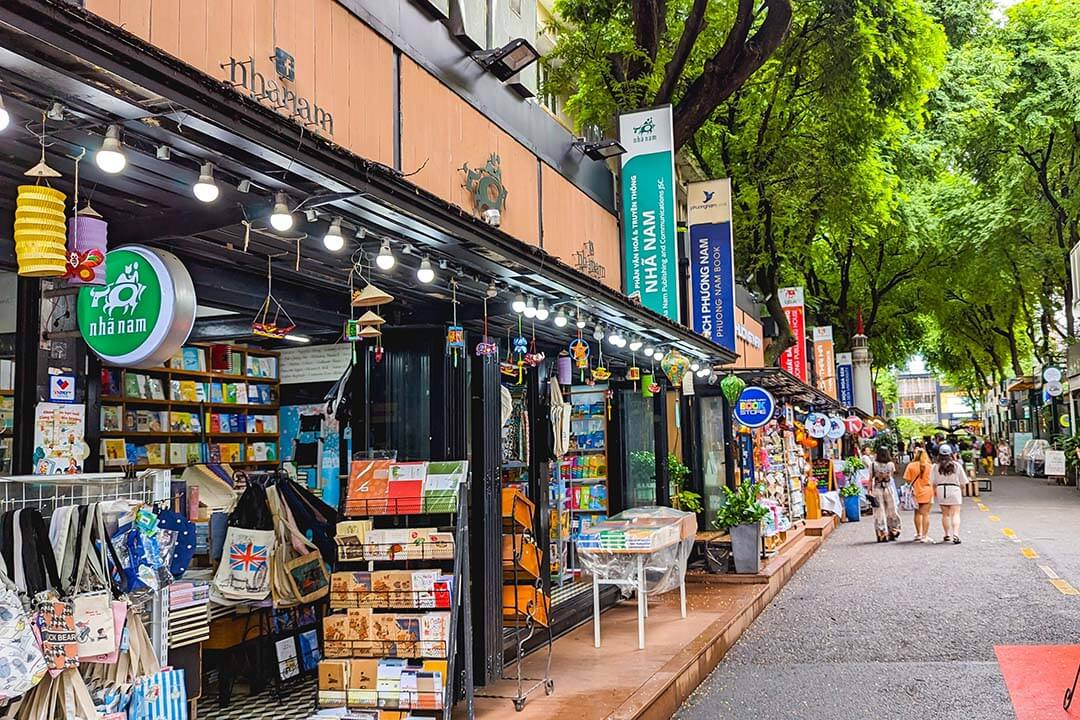
Saigon Japan Town
Saigon Japan Town adds a fascinating multicultural dimension to the area with its authentic Japanese shops, restaurants, and cultural events. This neighborhood highlights the blend of Vietnamese and Japanese influences, offering visitors the chance to enjoy traditional Japanese cuisine, shop for unique items, and experience cultural exchanges. Together with a visit to Ngoc Hoang Pagoda, these attractions create a comprehensive exploration of Ho Chi Minh City’s diverse cultural landscape.
Other attractions in Ho Chi Minh City
Ho Chi Minh City is a vibrant metropolis with numerous landmarks and attractions that complement a visit to the pagoda.
Things you might be interested in:
Notre Dame Cathedral
Notre Dame Cathedral is renowned for its Romanesque and Gothic architecture. Completed in 1880, it features striking red brick exteriors, intricate stained glass windows, and elegant spires, creating a dramatic visual presence against the city skyline.
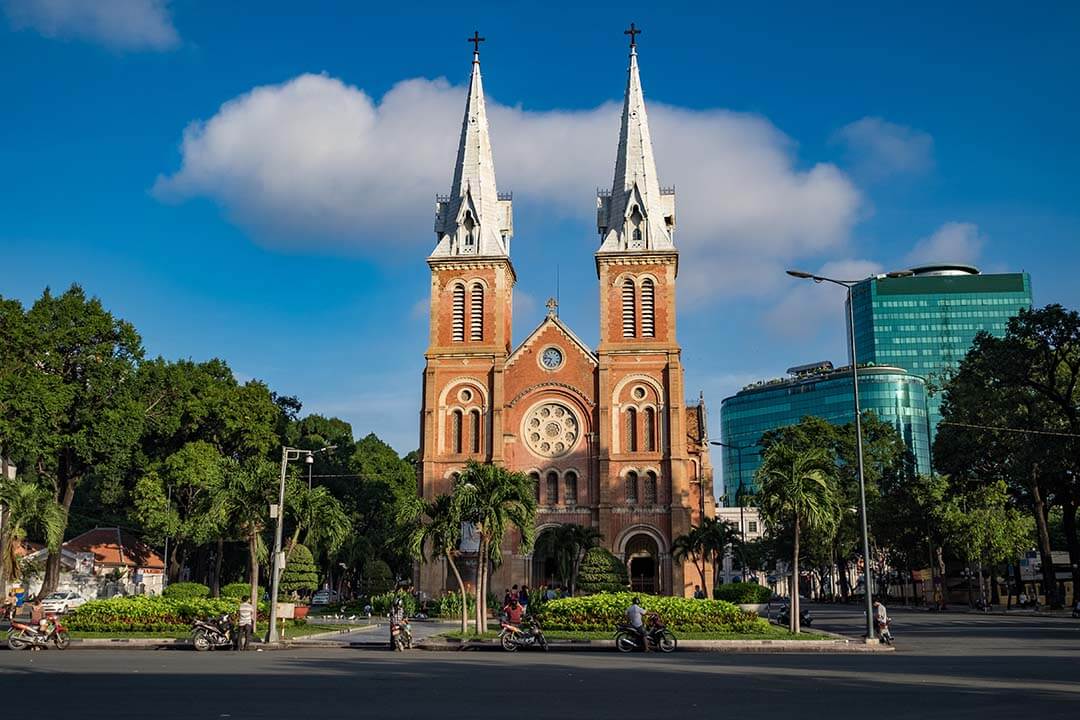
Inside, the cathedral offers a serene space for worship and reflection, with its peaceful atmosphere and religious artwork providing a tranquil retreat from the city’s hustle. It serves as a cultural and spiritual center, hosting regular services and special events, which highlight its significance in the city’s historical and religious landscape.
Museum of Ho Chi Minh City
The Museum of Ho Chi Minh City offers an extensive view of the city’s history with its diverse collection of artifacts and exhibits. Highlights include ancient relics, colonial-era items, and revolutionary memorabilia, providing a vivid portrayal of the city’s evolution.
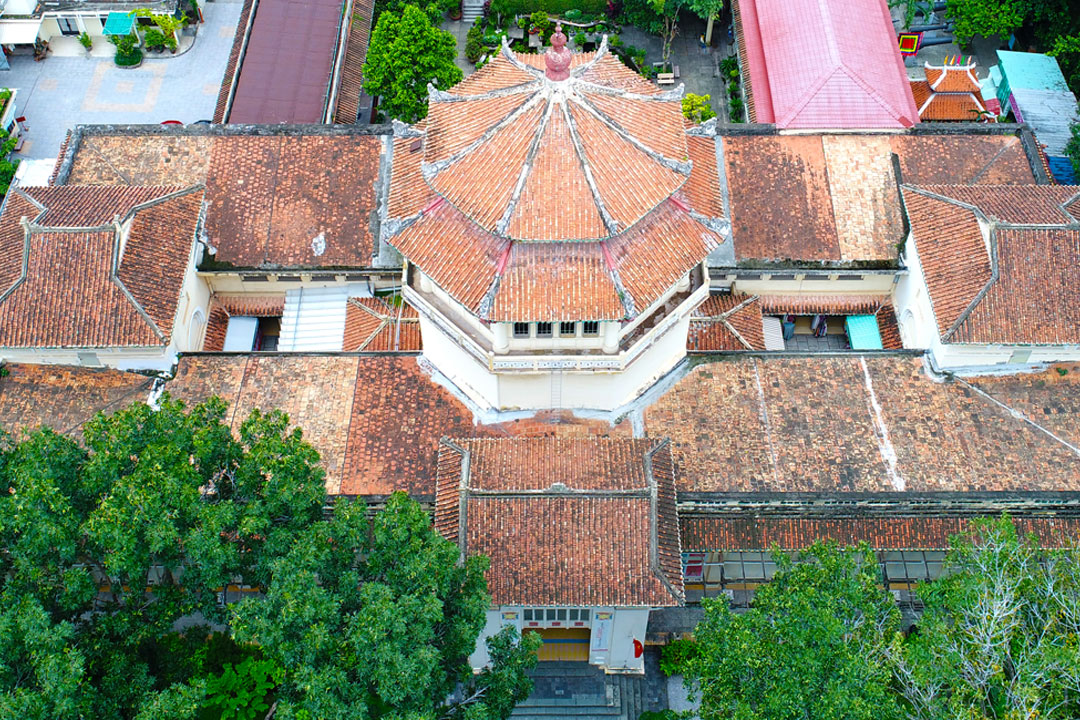
The museum’s French colonial architecture complements its rich displays, enhancing the overall experience. Its well-curated layout and informative content make it a valuable destination for those interested in the historical and cultural evolution of Ho Chi Minh City.
Independence Palace
The Independence Palace, or Reunification Palace, was completed in the 1960s and served as the presidential residence and command center for South Vietnam. Its modernist architecture and historical importance were highlighted when North Vietnamese tanks entered the palace in 1975, marking the end of the Vietnam War.
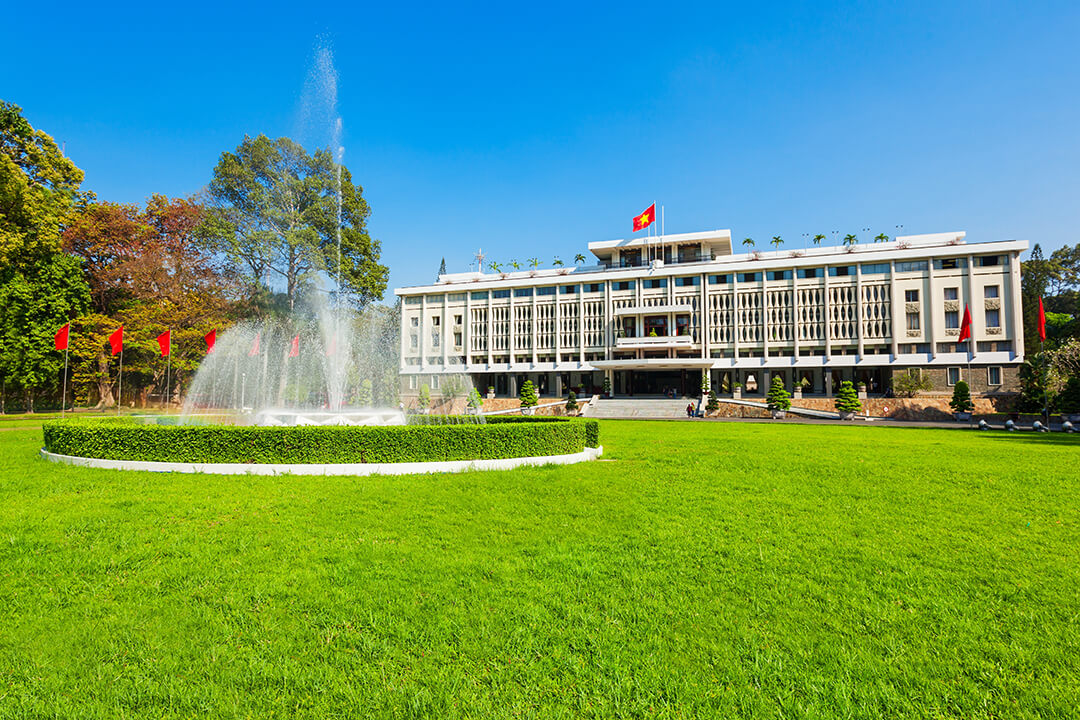
Visitors can explore the palace’s well-preserved rooms, including the grand ballroom, war room, and various offices. Each space offers a glimpse into its historical role and the political events of the era.
Bui Vien Walking Street
Bui Vien Walking Street is a bustling hotspot in Ho Chi Minh City, renowned for its vibrant nightlife. The area is lined with numerous bars, restaurants, and entertainment venues,… Neon lights and lively crowds contribute to the dynamic environment, making it a popular destination for both locals and tourists.
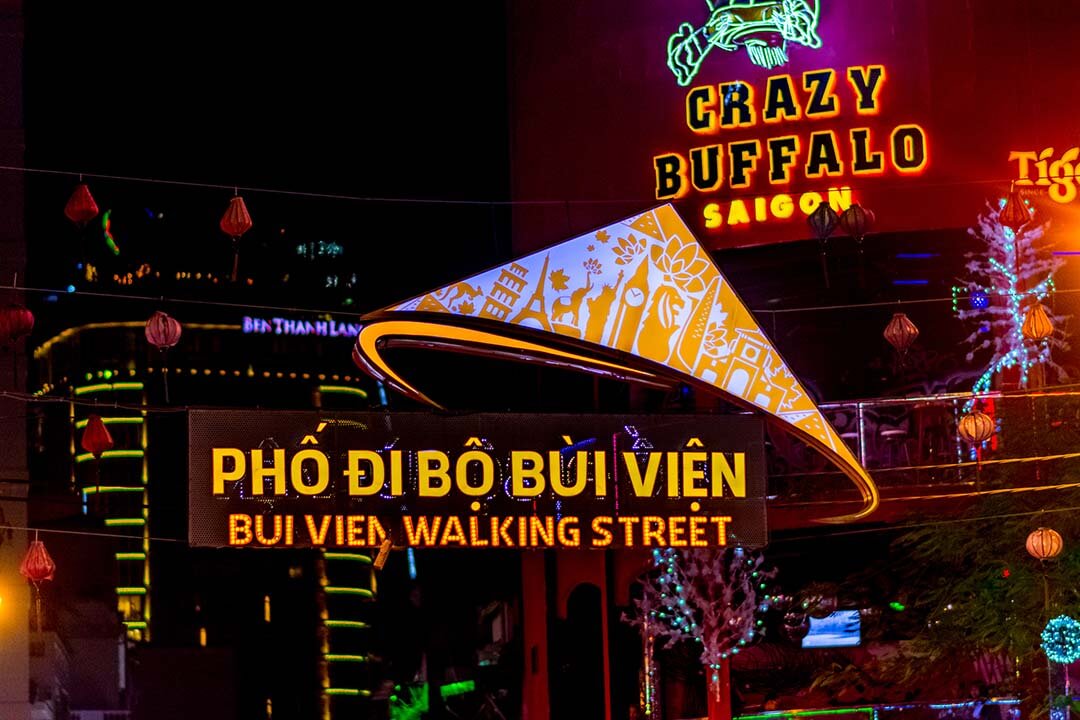
The street offers a mix of Vietnamese and international cuisines, from street food to global dishes. The street captures the essence of Ho Chi Minh City’s modern, urban vibe, providing visitors with a lively and immersive experience of the city’s contemporary cultural scene.
Cu Chi Tunnel
The Cu Chi Tunnel is located about 40 kilometers from Ho Chi Minh City. This vast underground network was used by Viet Cong forces for hiding, storing supplies, and planning operations during the Vietnam War. Visitors can explore expanded sections of the tunnels, seeing living quarters, kitchens, and defensive traps.
The site also features exhibits on the tunnel’s construction, strategic use, and the difficult conditions faced by those living underground. Artifacts and dioramas offer insight into the resilience and ingenuity of the Vietnamese fighters during the war.
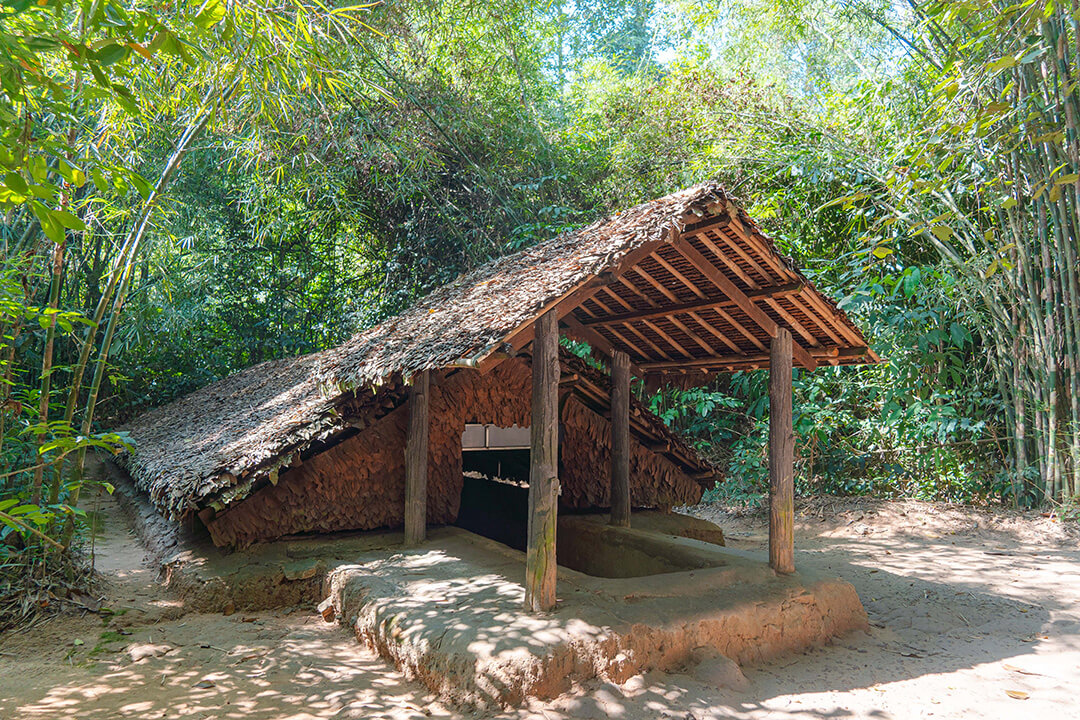
Ngoc Hoang Pagoda is a key cultural and spiritual site in Ho Chi Minh City, renowned for its rich history and artistic beauty. It offers a unique experience for those interested in Vietnamese religious practices and traditional craftsmanship. Explore the surrounding attractions to fully experience the city’s vibrant atmosphere. To fully experience the vibrant atmosphere of Ho Chi Minh City, be sure to explore the nearby attractions. For more travel tips and comprehensive guides, visit ‘Vietnam Travel Tips‘ to enhance your journey.


